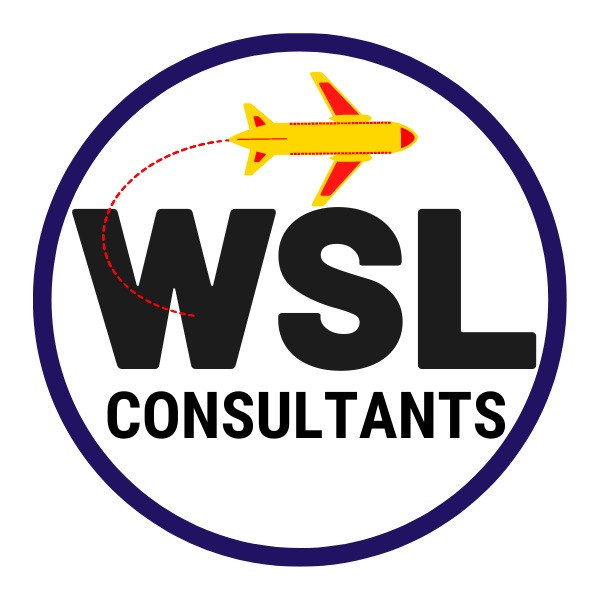Navigating the Study in USA Visa Process with Ease
Study in USA offers international students access to world-class education, vibrant campus life, and diverse cultural experiences. However, one of the most crucial steps for international students is obtaining a student visa to study in USA. Navigating study in USA visa process can be complex, but with the right guidance and understanding of the requirements, students can streamline the process and achieve their academic goals. In this comprehensive guide, we will explore the study in USA visa process, including visa types, application procedures, requirements, and essential tips for success.
Understanding Visa Types for study in USA:
1. F-1 Student Visa:
- The F-1 visa is the most common type of student visa for academic studies in the USA.
- It is required for full-time students enrolled in academic programs at accredited colleges, universities, or institutions.
2. J-1 Exchange Visitor Visa:
- The J-1 visa is for students participating in exchange programs, including study, research, or cultural exchange programs.
- It is commonly used for students sponsored by educational or cultural exchange organizations.
USA Student Visa Application Process:
1. Acceptance to SEVP-Certified Institution:
- To apply for a student visa, students must first receive acceptance to a Student and Exchange Visitor Program (SEVP)-certified institution in the USA.
2. Form I-20 or DS-2019 Issuance:
- Once accepted, the institution will issue a Form I-20 (for F-1 visa) or DS-2019 (for J-1 visa) to the student.
- The Form I-20 or DS-2019 is a critical document required for the visa application process.
3. SEVIS Fee Payment:
- Students are required to pay the SEVIS (Student and Exchange Visitor Information System) fee before applying for the visa.
- The SEVIS fee payment receipt is essential for the visa application.
4. Complete DS-160 Form:
- Students must complete the DS-160 Online Nonimmigrant Visa Application form.
- The DS-160 form collects biographical information, passport details, visa eligibility, and travel plans.
5. Schedule Visa Interview:
- After completing the DS-160 form, students must schedule a visa interview at the nearest U.S. embassy or consulate.
- Visa interview appointments should be scheduled well in advance, as wait times may vary.
6. Attend Visa Interview:
- On the day of the interview, students must bring all required documents, including passport, visa application confirmation, Form I-20 or DS-2019, SEVIS fee payment receipt, and financial documentation.
- The consular officer will conduct the interview to assess the student’s eligibility for the visa.
7. Visa Approval and Processing:
- If approved, the consular officer will issue the student visa, typically affixed to a page in the passport.
- Visa processing times may vary, so students should plan accordingly.
Essential Documentation for Visa Application:
1. Valid Passport:
- Students must have a passport valid for at least six months beyond the intended period of stay in the USA.
2. Form I-20 or DS-2019:
- The Form I-20 or DS-2019 issued by the SEVP-certified institution is a crucial document for the visa application.
3. SEVIS Fee Payment Receipt:
- Proof of SEVIS fee payment is required for the visa application process.
4. Financial Documentation:
- Students must demonstrate the ability to cover tuition, living expenses, and other costs while studying in the USA.
- Financial documentation may include bank statements, scholarship letters, sponsor letters, or affidavits of support.
5. Visa Application Confirmation:
- The DS-160 confirmation page serves as proof of visa application submission and payment.
6. Passport-Sized Photograph:
- Students should bring a recent passport-sized photograph meeting the U.S. visa photo requirements.
Tips for Success:
1. Start Early:
- Begin the visa application process well in advance to allow time for document gathering, form completion, and interview scheduling.
2. Be Prepared:
- Thoroughly review the visa application requirements and prepare all necessary documents before the interview.
- Practice answering potential interview questions to feel confident and prepared on the day of the interview.
3. Be Honest and Transparent:
- Answer all interview questions truthfully and provide accurate information during the visa application process.
- Consular officers appreciate honesty and transparency from applicants.
4. Dress Appropriately:
- Dress in professional attire for the visa interview to make a positive impression.
- Avoid wearing casual or overly revealing clothing.
5. Demonstrate Intent to Return:
- During the interview, demonstrate strong ties to your home country, such as family, employment, or property ownership, to show intent to return after completing studies.
6. Follow-Up if Necessary:
- If additional documents or information are requested during the interview, promptly provide the requested materials to expedite the visa processing.
Conclusion:
Navigating the USA study visa process requires careful planning, attention to detail, and adherence to visa requirements. By understanding the visa types, application procedures, required documentation, and essential tips for success, students can navigate the process with confidence and ease. Remember to start early, be prepared, and approach the visa application process with honesty and professionalism. With thorough preparation and adherence to visa guidelines, students can obtain the necessary visa to pursue their academic aspirations in the United States.
